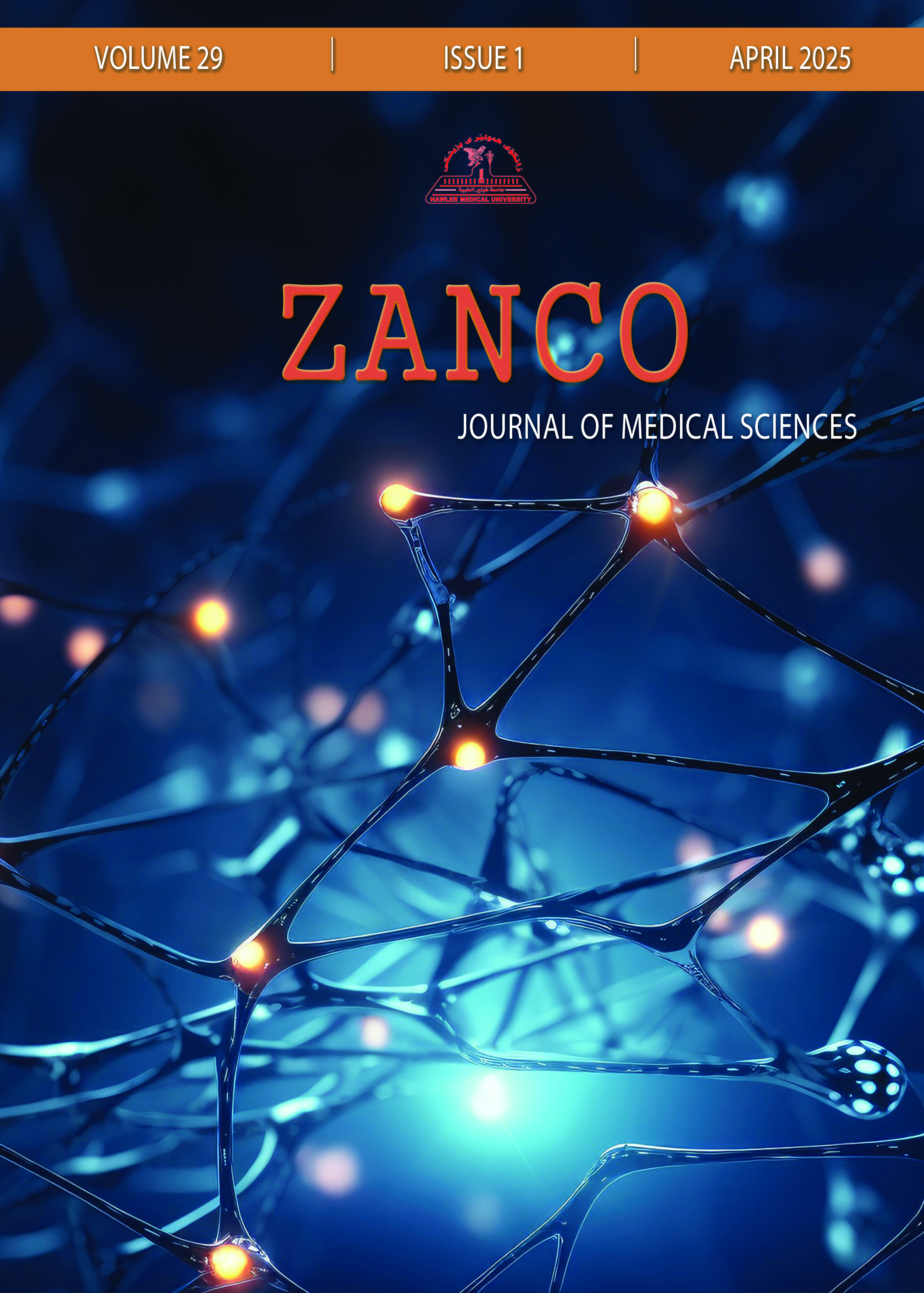Copyright (c) 2025 Mohammad Faeq M. Ameen, Sabir O. Mustafa (Author)

This work is licensed under a Creative Commons Attribution-NonCommercial-ShareAlike 4.0 International License.
- Articles
- Submited: September 18, 2022
-
Published: April 23, 2025
Abstract
Background and objective: Around 180,000 people die from burn injuries annually, which can result from heat, radiation, electricity, friction, or chemicals. Axillary and web post-burn contractures are prevalent and significantly limit the range of motion and quality of life, traditional contracture release procedures can result in donor site morbidity and low functional outcome. Range of motion after Starplasty flap for contractures in different part of the body
Methods: A longitudinal study that includes 20 cases selected to undergo Starplasty operation, and then were followed for three months. The study was conducted in three main hospitals in Erbil city (Rizgary Teaching Hospital, Western Emergency Hospital and Emergency Hospital), The investigation started in November 2020 and continued until June 2022.
Results: A total of 20 patients, including both children and adults, underwent contracture release surgery using Starplasty. The mean preoperative ROM (range of motion) was 30.5% of the normal value, which was increased to 56.6%, 66.0%, 75.3%, and 88.2% of the normal value, postoperatively (after one week, one month, and three months, respectively). On all follow-up occasions, the mean ROM increased significantly (P <0.001).
Conclusion: Starplasty was a successful and safe procedure in treating both Axillary and web space contractures. In the absence of significant complications and graft failure, a response exceeding 50% of the normal range of motion can start as early as one week postoperatively.
Metrics
References
- World Health Organization. Fact Sheet about Burn. Geneva: WHO; 2018.
- Radzikowska-Büchner E, Łopuszyńska I, Flieger W, Tobiasz M, Maciejewski, R, Flieger J. An Overview of Recent Developments in the Management of Burn Injuries. Int J Mol Sci. 2023; 24(22):16357. doi: 10.3390/ijms2422163571
- Karakol P, Bozkurt M. Recent strategic approach in postburn extremity scars and contractures. JPHS. 2021; 55(3):153–61. doi: 10.1080/2000656X.2020.18566701
- Emsen I M. Cross Incision Plasty for Reconstruction of the Burned Web Space: Introduction of an Alternative Technique for the Correction of Dorsal and Volar Neosyndactyly. J Burn Care Res. 2023; 29(2):378–85. doi: 10.1097/BCR.0b013e31816673cd1
- Arellano JA, Jeong T, Alessandri-Bonetti M, Pandya S, Liu H, Stofman GM, et al. 797 The Development and Management of Neck Burn Scar Contracture Recurrence: A Single-Center Retrospective Cohort Study. J Burn Care Res. 2024; 45(Suppl 1):259. doi: 10.1093/jbcr/irae036.338
- Cauley RP, Hickey SA, Hultman CS, Mathews K, Goverman J. STARplasty for reconstruction of the burned axilla. Ann Plast Surg. 2017; 78(3):269-73. doi: 10.1097/SAP.0000000000000926
- Liu HY, Bonetti MA, Jeong T, Pandya S, Stofman GM, Egro FM. STARplasty for axillary burn reconstruction: a retrospective review (American Association for Hand Surgery). Hand Surg. 2024; 49(2):187-95. doi: 10.1016/j.handsurg.2024.02.001
- Matsuura R, Shimizu Y, Matsuura N, Ntege EH, Wada N. Management of Axillary Contracture in Poland Syndrome: Differentiating Fibrous Band and Skin for Optimal Release. J Clin Med. 2023 Jul 28;12(15):4957. doi: 10.3390/jcm12154957
- Godleski M, Holden MS, Luby D, Weitzenkamp D, Boimbo S, Lindberg G. Clinical outcomes from a foam wedge splinting program for axillary contracture prevention in the intensive care unit. J Burn Care Res. 2014; 35(6):e379-86. doi: 10.1097/BCR.0000000000000038
- Webb DC, Byrne M, Kolmus A, Law HY, Holland AE, Cleland H. Outcomes of a shoulder treatment flowchart in patients with axillary burns. J Burn Care Res. 2011; 32(2):224-30. doi: 10.1097/BCR.0b013e31820aaeda
- Goverman J, Mathews K, Goldstein R, Holavanahalli R, Kowalske K, Esselman P, et al. adult contractures in burn injury: a burn model system national database study. J Burn Care Res. 2017; 38(1):e328-e36. doi: 10.1097/BCR.0000000000000380
- Sison-Williamson M, Bagley A, Palmieri T. Long-term postoperative outcomes after axillary contracture release in children with burns. J Burn Care Res. 2012; 33(2):228-34. doi: 10.1097/BCR.0b013e3182331df4
- Chen B, Xu M, Chai J, Song H, Gao Q. Surgical treatment of severe or moderate axillary burn scar contracture with transverse island scapular flap and expanded transverse island scapular flap in adult and pediatric patients--A clinical experience of 15 cases. Burns. 2015; 41(4):872-80. doi: 10.1016/j.burns.2014.10.029
- Orgill DP, Bayer LR. Negative pressure wound therapy: past, present and future. Int Wound J. 2013; 10 Suppl 1(Suppl 1):15-9. doi: 10.1111/iwj.12170.





